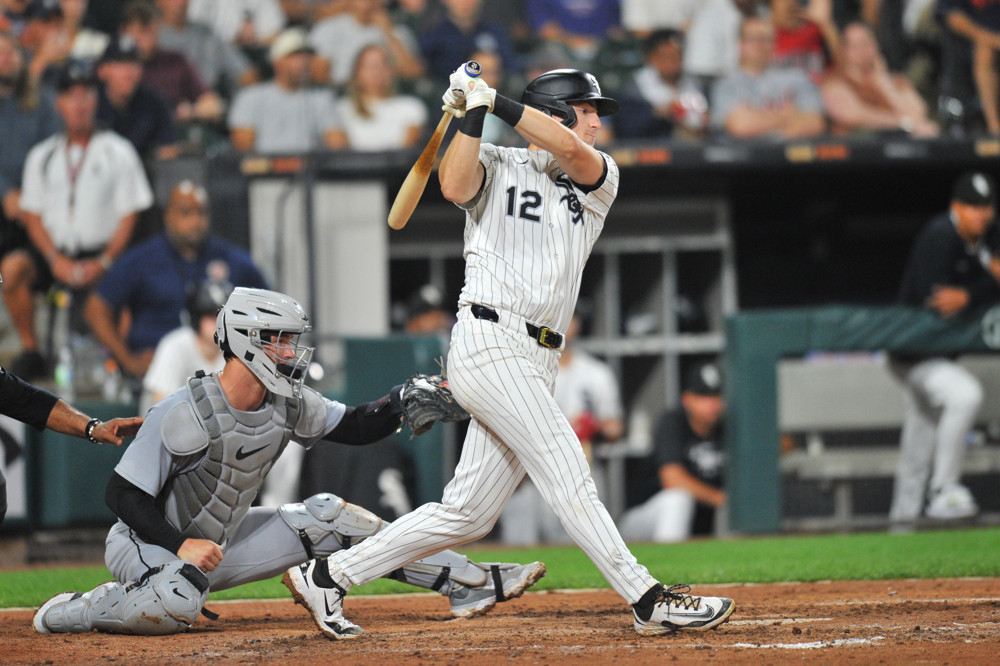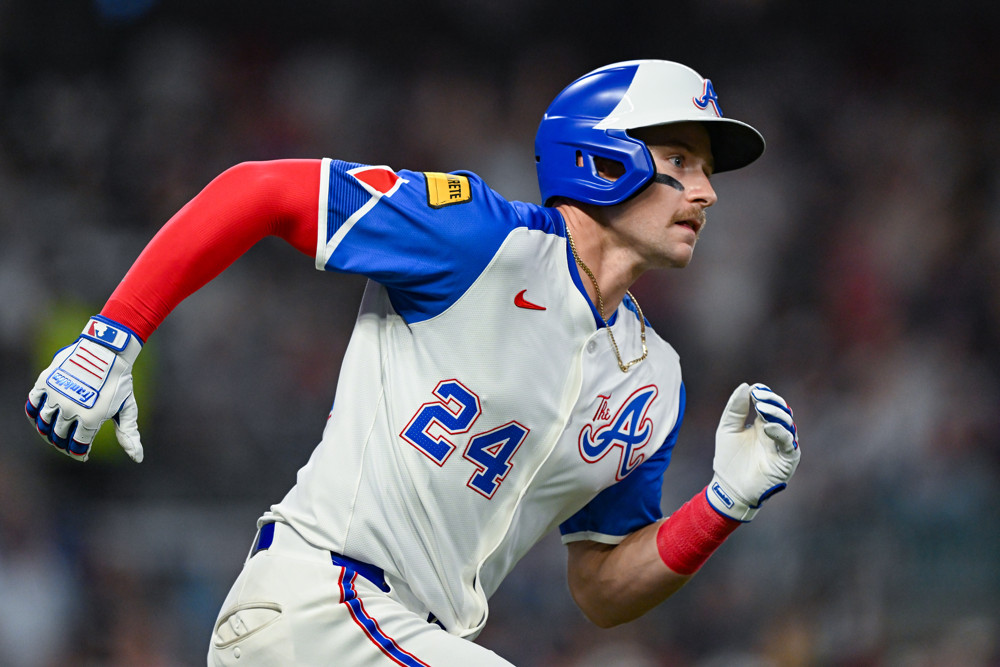PHOENIX -- An early camp observation is that young right-hander Jairo Iriarte's locker is on the same wall of the three most established starters in the White Sox rotation.
A more drilled-down version of that observation is that Iriarte's locker was set up next to 13-year big leaguer and fellow Venezuelan Martín Pérez.
"When I got here and I saw that my locker was right next to his, that kind of motivated me," Iriarte said via interpreter. "I just want to learn from him, his experiences. I'm just here to do that: to learn and to follow him."
Pérez's days of averaging 94 mph on his fastball -- as Iriarte did last year -- are likely past, and his continued survival supports his dogged emphasis on preparation, which he's taken it upon himself to preach at every opportunity. That the White Sox used the power of suggestion to put Iriarte under his wing speaks to how important the 23-year-old is to their future, but it likely wasn't necessary, if the regular sight of Wikelman González voyaging over from his locker to sit by Pérez and listen is any indication.
"He has a lot of talent, he's healthy, what's going to make the difference is the preparation," Pérez said. "It's not enough to just make the team, you've got to do your job. Because if you don't do your job you're going to Triple-A or you going somewhere else. I know our manager wants to win. We understand that this is a process and we have a lot of young guys. At the same time, when it's time to compete, they're not going to say, 'How old is he?' They're going to say, 'Can he get people out? Can he get this guy? Can he make this play?'"
For many in the organization, Iriarte's 2024 was already a testament to finding ways to get people out when not everything is clicking. He surpassed a career-high with 126 innings of a 3.71 ERA at Double-A Birmingham, helping power a rotation that carried the Barons to a Southern League title. But upon arrival to Chicago it was laid bare how far Iriarte delivery had drifted from the "hyper-mobile" athletic move they fell in love with from video of his 2023 season.
"He had spent the [post-2023] offseason, pre-acquisition, trying to be a little more upright, trying to just be in the zone more," said senior advisor Brian Bannister. "But I don't think that's necessarily what we valued the most. We liked his natural hypermobility, his ability to have a high [strikeout] percentage, huge swing-and-miss. As an offshoot of him standing taller and prioritizing being in the zone, his fastball really flattened out, and I don't think it was a good match for his arsenal and his breaking ball."
Iriarte had shaved a point off his walk rate, but saw his strikeout rate dip to 22.8 percent in Birmingham after it peaked at over 40 percent during his first encounter with Double-A hitters the previous year. Seeing Iriarte's flexibility and extension in 2023 made White Sox scouts and Bannister dream of him throwing "upshoot" four-seamers that would explode from a low release height and sneak over barrels, but instead his fastball carry had flattened out so much that Statcast was classifying them as sinkers.
With Iriarte out of sorts mechanically, Drew Thorpe's 2024 season ending with surgery, Steven Wilson pitching his way off the 40-man roster with mechanical issues of his own and Samuel Zavala under the Mendoza Line in High-A, it's worth wondering if the White Sox felt any buyer's remorse from the Dylan Cease trade. Team leadership would counter that notion on two fronts. The first is that they felt teams were reluctant to value Cease as a No. 2 starter despite his admirable durability, and that they made a move when the Padres did. The second is that they don't feel Thorpe hurting his elbow, something pitchers regularly do, or Iriarte needing refinement at this stage of his development, significantly alters their original view of their value.
A point in their favor would be if they could get Iriarte on track this spring.
"We've been finding that if you're trying to influence the fastball, a lower front side is going to accomplish that," Bannister said. "It's kind of like what you do early, the opposite happens late. If you're looking for more up [carry] on your fastball, to put it simply, you go down early. And if you're looking for better slider, secondaries, more like Shane Bieber and Cleveland type where they get a lot of gloves in their release point window, if you go up early it tends to lead to down late."
The plain-spoken (as much as it can be) explanation is that Iriarte needed to keep his glove arm a little lower in his delivery to throw an ideal backspinning fastball, and it's the end product of a fair amount of trial and error, reviewing what worked and what didn't when John Brebbia had a similar issue last season, back-and-forth with Ethan Katz regularly FaceTiming Iriarte in Venezuela during the offseason, and ultimately some biomechanical analysis from the Sox pitch lab -- the existence of which predates this current front office -- to figure out the eventual one-line takeaway of what the young right-hander needed to do.
He seems to appreciate the effort.
"This was my best offseason. It was very, very, very good," Iriarte said via interpreter. "I was able to make that adjustment and I was able to show them in the last bullpen that I've been working on that, and the results are really showing up."
Even with Thorpe three weeks behind other starters in his buildup, the presence of Bryse Wilson and Sean Burke currently insulate the White Sox from having to push Iriarte into the Opening Day rotation, before he's thrown a single pitch in Triple-A. And someone like Bannister is also more agnostic about Iriarte's ultimate home being in the rotation, preferring a path of maxing out his stuff so he can be an impact weapon in whichever role he lands, rather than prioritizing strike-throwing above all else.
To that end, Iriarte is also optimistic that he's leaving his days of 94 mph behind after his most recent bullpen, but he's going in the other direction than Pérez.
"I feel very good, and I feel like I can throw harder," Iriarte said via interpreter. "Because of the work that I did and the adjustments I made, I was able to correct that little thing that was hold me back with my velocity. Now I feel good. I feel confident and I know I still have more to show."






